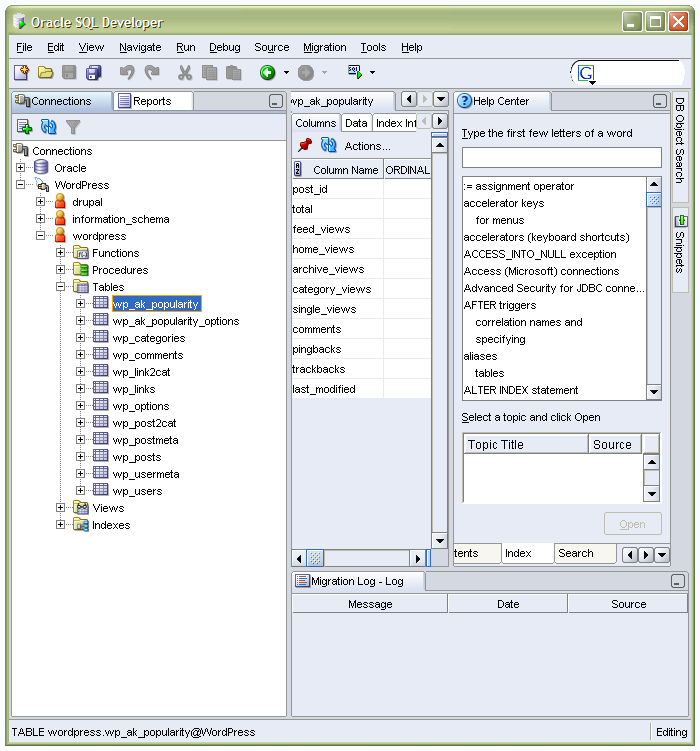My work in the last week has put me on something of a learning about Oracle. This is down my needing to add file metadata to database as part of an application that I am developing. The application is written in SAS but I am using SAS/Access for Oracle to update the database using SQL pass-through statements written in Oracle SQL. I am used to SAS SQL and there is commonality between it and Oracle’s implementation, which is a big help. Nevertheless, there of course are things specific to the Oracle world about which I have needed to learn. My experiences have introduced me to concepts like triggers, sequences, constraints, primary keys, foreign keys and the like. In addition, I have also seen the results of database normalisation at first hand.
Using Oracle’s SQL Developer has been a great help in my endeavours thanks to its online help and the way that you can view database objects in an easy to use manner. It also runs SQL scripts, giving you a feel for how Oracle works, and anyone can download it for free upon registration on the Oracle website. Also useful is the Express edition of the Oracle 10g database that I now have at home for personal learning purposes. That is another free download from Oracle’s website.
My Safari bookshelf has been another invaluable resource, providing access to O’ Reilly’s Oracle books. Of these, Mastering Oracle SQL has proved particularly useful and I made a journey to Manchester after work this evening (Waterstone’s on Deansgate is open until 21:00 on weekdays) to see if I could acquire a copy. That quest was to prove fruitless but I now have got the doorstop that is Oracle Database 10g: The Complete Reference from The Oracle Press, an imprint of Osborne and McGraw Hill. I needed a broader grounding in all things Oracle so this should help and it also covers SQL but the aforementioned O’ Reilly volume could return to the wish list if that provision is insufficient.
